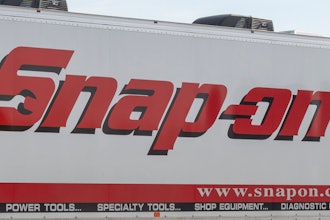Although the term “cloud” is still foreign to many people, the concept can be easily understood by anyone familiar with the Internet. Online dock-scheduling software is one of numerous cloud applications businesses large and small rely on for their operations. Unlike traditional software purchased at retail outlets and installed on an individual computer terminal or network, Web-based schedulers are accessible securely through a Web site or online portal. Envision online banking, e-mail, or social media sites. It’s the same concept.
And it’s this characteristic that makes it the perfect option for businesses looking to improve their scheduling processes. Being Web-based, online schedulers offer functionality that most traditional software programs cannot, such as:
- Online driver self-scheduling. This is perhaps the most important and popular feature found in most online dock-scheduling systems, as it alone can completely automate the process. Carriers and their drives access the online calendar through their Web connection, view available delivery times and docks, select their choice, and then confirm the drop-off. The scheduler typically does the rest and books the inbound shipment without any further action from the dispatcher or dock worker. It not only provides convenience for the inbound shippers, but also dramatically reduces the number of phone calls that must be made and answered from facility staff.
These time savings, along with better resource-management, can equate to monetary savings as well. By utilizing online dock-scheduling software, Georgia-Pacific saves an average of two hours and $50 per day at each dock location. Times that by the 40 docks currently relying on the technology, and the company saves an average of 80 hours and $2,000 daily.
- Automated e-mail and text message reminders. Missed and late deliveries can throw a wrench in the supply chain process and add to a facility’s operating costs, especially if it requires dock staff to work overtime hours to accommodate these incoming shipments. For many facilities, it’s not feasible to make follow-up reminder phone calls or send e-mail reminders like a doctor or massage therapist would (even through studies prove that reminders of any kind can significantly reduce these). Some online dock-scheduling software programs feature automated e-mail and text message reminders sent to drivers prior to their schedule delivery time. Dock managers and staff simply indicate when they want the reminder sent, such as one day or three days beforehand.
- Reporting and record-keeping capabilities. The delivery doesn’t begin and end with the actual physical arrival and unloading of a shipment. Distributors keep accurate details on arrival and departure times, late arrivals and “no-shows,” plus data and contact information on their carriers and the delivered goods. Although there are many “store-bought” database and spreadsheet programs that can accomplish this, they require dock personnel to manually input this information. They may also lack the capability to quickly pull specific information or easily generate reports. Generally, all information entered into an online dock-scheduling program—from carrier names and phone numbers to scheduled delivery times—is added to one centralized database the moment a driver schedules the shipment. This eliminates the need for the dispatcher or staff to manually input this data. Additionally, some online schedulers also provide standard reports that dock managers and staff can quickly run and create, without having to extract the data from several different sources, spreadsheets, or folders.
Having accurate docking information can also equate into monetary savings. Consumer and industrial packaging manufacturer Sonoco uses online scheduling software to not only schedule is inbound deliveries, but to also have a reliable record of arrival and departure. It then references these in instances where the carrier attempts to charge a fee for trucks held at the dock for more than two hours. These fees generally run $150 to $200 per hour.
The beauty of cloud-based technology—and one of the most popular reasons why so many businesses are adopting it—is the variety of online functions it offers. Although there are more traditional approaches with Web connectivity involving software programs, these typically require extensive and costly custom design and programming, as well as the need for continuous IT support for maintenance issues, upgrades, and updates.
BENEFITS OF WEB-BASED SOFTWARE
In addition to the aforementioned features found standard in most online scheduling applications, there are other benefits that make this technology really stand out from the store-bought variety and can make dock managers’ jobs must easier. These include:
- Accessibility. Being Web-based makes online dock scheduling software not only beneficial to drivers and carriers, but also to dock managers and personnel that need access to their inbound schedules from any location, such as from other dock stations or areas at the inbound facility, from home or while “on the road.” It’s not confined to one network or single computer station, and it’s easily accessible from Smartphones, iPads, PDAs and other mobile devices.
- Cost. Many manufacturers automatically presume high costs when the subject of software is brought up. That’s usually not the case with cloud-based technology such as online dock scheduling software. Like most Software as a Service (SaaS) applications, online dock schedulers typically are “pay-as-you-go” services with low monthly costs and no long-term contracts. They typically don’t typically require any additional hardware or accessories to properly utilize.
- Maintenance. Another factor that favors cloud-based software over the traditional variety is maintenance. Managing internal software systems can require an on-site IT professional or contracted computer service company for regular maintenance, upgrades, updates and emergency situations that require immediate attention. Since cloud-based dock-scheduling software generally is housed off-site on secure servers and managed by the service provider, manufacturers using the application do not have to worry about any maintenance or updates, as they’re conducted automatically.
- Support. Quality customer support is not something that immediately comes to mind when one thinks of “boxed” software from retail outlets. An FAQ or user guide may suffice for a word-processing program, but essential chain-supply tasks such as dock-scheduling require an application with dependable customer support. Many SaaS scheduling systems offer some type of online support, with a few offering live phone support. Being able to speak with a live person about technical problems can mean the difference between a quick solution and an ongoing issue that disrupts dock procedures.
Advancements in Internet-based, “cloud” technology are having a positive impact on the operations of most industries, including manufacturers. Time-consuming and tedious tasks such as managing inbound deliveries and scheduling specific docks to carriers can now be completely automated and streamlined with a minimal amount of effort and cost. And the benefits of these cloud-based systems are felt by both distributors and the carriers and drivers delivering their shipments.
About the Author: Eric Richard is the senior public relations specialist at Appointment-Plus (www.appointment-plus.com), an industry-leading online scheduling software application used by manufacturers, distributors and other inbound facilities to manage their deliveries. The scheduler has booked over 55 million appointments and reservations since 2001.






















